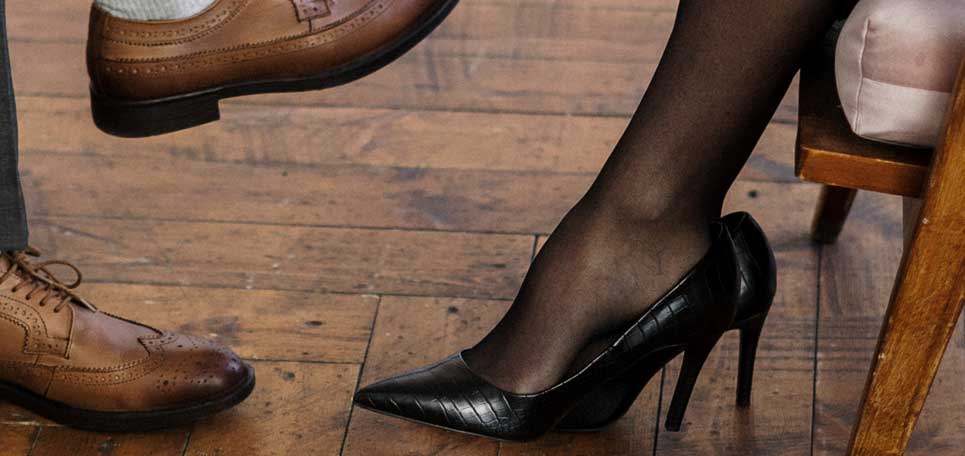All Services
- Biomechanics and Custom-made Orthotics
- Bunions
- Clearanail Fungal Nail Treatment.
- Dry Needling for Leg, Ankle & Foot conditions
- General Conditions
- Lower Back Pain
- Metatarsalgia
- Nail Avulsion Surgery
- Neuroma
- Osgood-Schlatters disease
- Prolotherapy/Hydrodilatation
- Sever’s disease
- Specialist Verrucae Wart Needling
- Sports Injuries
- Stress fractures of the feet

General Conditions
As Podiatrists, we are trained to diagnose and treat conditions that can affect the lower limbs, including those that can cause aching legs.
There are several foot and ankle conditions that can cause pains within the legs. The first step is usually to identify the underlying cause of the pain. This may involve diagnosing an X-ray, MRI, or other diagnostic test. Once the cause is identified, treatment may include rest, ice, compression, and elevation (RICE), physical therapy, or medication. In some cases, surgery may be necessary to repair damaged ligaments or tendons.
Knee pain can also be caused by a variety of factors, such as overuse, injury, or arthritis. A podiatrist can diagnose the cause of your knee pain and develop a treatment plan that may include RICE, physical therapy, or bracing. In some cases, surgery may be necessary to repair damaged cartilage or ligaments. Your podiatrist may also recommend orthotics or shoe inserts to help correct any underlying issues with your gait or foot structure that may be contributing to your knee pain.
Flat Feet: Flat feet can lead to overpronation, where the foot rolls inward excessively with each step. This can cause the legs to rotate more than they should when walking or running leading to stress on the knee joints.
Shin Splints: Shin splints are a common injury among runners and athletes, characterized by pain along the front of the lower leg. They can be caused by overuse, improper footwear, or poor foot mechanics.
Heel Pain: Heel pain is a common condition that can be caused by a number of conditions. A podiatrist can diagnose the underlying cause of your heel pain and develop a treatment plan that may include stretching, physical therapy, or shoe inserts. In severe cases, surgery may be necessary to remove a heel spur or repair a torn tendon. Your podiatrist can also provide advice on proper footwear and foot care to help prevent future heel pain. Common causes of heel pain are:
Plantar Fasciitis: Plantar fasciitis is an inflammation of the plantar fascia, a thick band of tissue that runs along the bottom of the foot. This can cause pain and aching in the heel and arch of the foot, which can radiate up into the legs.
Achilles Tendinitis: Achilles tendinitis is an inflammation of the Achilles tendon, which connects the calf muscles to the heel bone. This can cause pain and aching in the back of the leg, which can make it difficult to walk or run.
Here are some ways our podiatrists can resolve general foot pain:
- Examination and diagnosis: We will examine the foot and take a medical history to identify the underlying cause of the foot pain.
- Custom-made orthotics: If the foot pain is caused by an abnormal foot structure or gait, we may prescribe custom-made orthotics to correct the problem.
- Physical therapy: We may recommend physical therapy exercises to strengthen the muscles and tendons in the foot, which can help to relieve pain and prevent further injury
- Medications: We may prescribe medications to manage pain and inflammation in the foot, such as non-steroidal anti-inflammatory drugs (NSAIDs).
- Rest and ice: We may may recommend rest and icing the affected area to reduce swelling and inflammation.
- Footwear modifications: We may recommend modifying footwear to provide additional support or reduce pressure on the affected area.
- Injection therapy: We may use injection therapy to reduce pain and inflammation in the foot.
- Surgery: In severe cases, surgery may be necessary to correct the underlying problem causing the foot pain.
Our Team at Free Your Feet can evaluate the feet and ankles to diagnose the underlying cause of aching legs and develop a treatment plan. Treatment may include orthotics, physical therapy, or other interventions to improve foot mechanics and reduce stress on the lower legs. By addressing the root cause of aching legs, we can help patients find relief and improve their quality of life.

